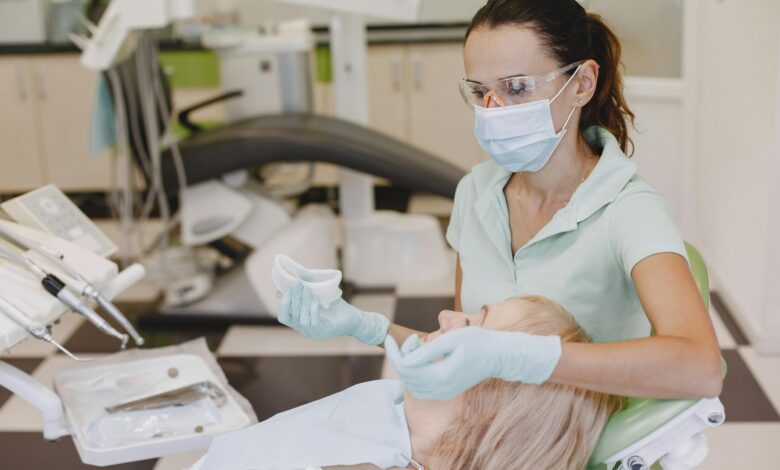Understanding Dental and Vision Coverage in Health Insurance

Health insurance is a vital tool for managing healthcare costs, ensuring access to necessary medical services, and promoting overall well-being. While most people are familiar with the basics of health insurance—such as coverage for doctor visits, hospital stays, and prescription medications—many policies also include additional benefits like dental and vision coverage . These components often go overlooked, yet they play a significant role in maintaining long-term health. In this article, we’ll explore what dental and vision coverage entail, why they matter, and how they fit into the broader landscape of health insurance.
What Is Dental Coverage?
Dental coverage is a type of health insurance specifically designed to help pay for dental care. It typically includes preventive, basic, and major services, each serving a unique purpose in maintaining oral health. Let’s break down these categories:
1. Preventive Services
Preventive dental care focuses on maintaining good oral hygiene and catching potential issues early before they escalate into more serious (and costly) problems. Common preventive services covered by dental insurance include:
- Routine cleanings : Professional teeth cleaning performed by a dentist or hygienist.
- Dental exams : Regular check-ups to assess oral health and identify any signs of cavities, gum disease, or other conditions.
- X-rays : Diagnostic imaging used to detect hidden issues beneath the surface of the teeth and gums.
Most dental plans cover preventive services at 100% , meaning you won’t have to pay out-of-pocket for these essential procedures if you stay within your network.
2. Basic Procedures
Basic dental services address common issues that require treatment beyond routine maintenance. Examples include:
- Fillings : Repairing cavities caused by tooth decay.
- Root canals : Treating infections or damage to the inner part of the tooth.
- Extractions : Removing damaged or impacted teeth.
Insurance plans usually cover basic procedures at 50-80% , depending on the specifics of the policy. However, patients may still be responsible for a portion of the cost through deductibles or copayments.
3. Major Procedures
Major dental work involves complex treatments that are often more expensive. These might include:
- Crowns : Caps placed over damaged teeth to restore their shape and function.
- Bridges : Devices used to replace missing teeth.
- Dentures : Removable appliances that mimic natural teeth.
- Orthodontics : Braces or aligners to correct misaligned teeth.
Coverage for major procedures varies widely among plans but typically ranges from 20-50% . Some policies exclude orthodontic treatments altogether unless explicitly included as an optional add-on.
Why Is Dental Coverage Important?
Good oral health is closely linked to overall health. Neglecting dental care can lead to complications such as gum disease, tooth loss, and even systemic conditions like heart disease and diabetes. Here’s why having dental coverage is crucial:
- Cost savings : Routine preventive care reduces the likelihood of needing expensive treatments later.
- Improved quality of life : Healthy teeth and gums contribute to better nutrition, clearer speech, and enhanced self-confidence.
- Early detection : Regular check-ups allow dentists to spot early warning signs of oral cancer and other serious conditions.
Despite its importance, dental coverage is not always included in standard health insurance plans. Many employers offer it as a separate benefit, while individual buyers can purchase standalone dental policies or add-ons to existing health plans.
What Is Vision Coverage?
Vision coverage is another specialized form of health insurance focused on eye care. Unlike general health insurance, which primarily deals with illnesses and injuries, vision plans emphasize maintaining healthy eyesight and addressing corrective needs. Here’s an overview of what vision coverage typically includes:
1. Eye Exams
Regular eye exams are fundamental to detecting vision changes, identifying refractive errors (like nearsightedness or farsightedness), and screening for eye diseases such as glaucoma and cataracts. Most vision plans cover annual or biennial eye exams either fully or partially.
2. Corrective Lenses
For individuals who need glasses or contact lenses, vision insurance helps offset the costs associated with purchasing these items. Coverage often includes:
- Frames and lenses for eyeglasses.
- Contact lenses.
- Discounts on upgrades, such as anti-glare coatings or progressive lenses.
The extent of coverage depends on the plan, but many policies provide allowances or fixed percentages toward these expenses.
3. Additional Benefits
Some vision plans extend beyond basic exams and corrective lenses to include perks like:
- Discounts on LASIK surgery or other vision correction procedures.
- Coverage for prescription sunglasses.
- Access to discounted rates at participating optometrists and optical retailers.
Why Is Vision Coverage Important?
Healthy vision is essential for daily functioning and quality of life. Poor eyesight can affect everything from driving safely to performing well at work or school. Moreover, untreated eye conditions can worsen over time, leading to permanent vision loss. Key reasons to prioritize vision coverage include:
- Affordability : Eye exams, glasses, and contacts can add up quickly without insurance.
- Preventive care : Regular screenings catch issues early when they’re easier and less expensive to treat.
- Convenience : Vision plans streamline access to affordable eye care and products.
Like dental coverage, vision insurance is often offered as a supplemental benefit rather than being bundled into standard health plans. Individuals can choose to enroll separately based on their needs.
How Do Dental and Vision Coverage Fit Into Health Insurance?
While dental and vision coverage are distinct from traditional health insurance, they complement it by addressing specific aspects of wellness that are critical yet frequently overlooked. Here’s how they integrate into the larger picture:
1. Employer-Sponsored Plans
Many employers offer dental and vision coverage as part of their employee benefits package. Employees can opt-in during open enrollment periods, sometimes at reduced group rates compared to buying individually.
2. Individual Marketplace Options
Under the Affordable Care Act (ACA), dental coverage for children is considered an “essential health benefit,” meaning it must be included in pediatric health plans sold on the marketplace. Adult dental and vision coverage, however, remains optional and requires separate enrollment.
3. Medicare and Medicaid
Original Medicare does not include dental or vision benefits, though some Advantage plans (Medicare Part C) do. Medicaid programs vary by state, with some offering limited dental and vision services for adults and more comprehensive coverage for children under the Children’s Health Insurance Program (CHIP).
4. Standalone Policies
For those without employer-sponsored options or ACA marketplace access, standalone dental and vision plans are available directly from insurers. These policies tend to be affordable and flexible, catering to diverse budgets and needs.
Tips for Choosing the Right Plan
When evaluating dental and vision coverage, consider the following factors to ensure you select a plan that meets your needs:
- Network restrictions : Check whether your preferred providers participate in the plan’s network.
- Coverage limits : Understand the maximum annual benefits and any exclusions.
- Out-of-pocket costs : Compare premiums, deductibles, copays, and coinsurance amounts.
- Waiting periods : Be aware of any waiting periods before certain services are covered.
- Additional features : Look for extra perks like discounts on elective procedures or wellness incentives.




